Unconscious Bias Examples In the Workplace: What are the Hidden Prejudices in the Workplace?
Ever wondered about the sneaky biases that influence our thoughts and actions in the workplace without us even realizing it? These biases shape our perceptions about our workplace and impact our daily lives, which might have long-term consequences. The only solution is to have a greater understanding of what those biases are and raise the necessary awareness. And with the help of unconscious bias examples, we can take a step forward in tackling those biases.
Don’t worry; we will not keep you hanging just with the examples. This blog will give you thorough details on the concept of unconscious bias, each bias, and how you can solve them. Let’s delve in.
What is Unconscious Bias?
To know the true reality of yourself, you must be aware not only of your conscious thoughts, but also of your unconscious prejudices, bias and habits.
– Anonymous
Unconscious bias in the workplace refers to individuals' unintended preconceptions that influence their decisions, actions, and judgments toward others. These include unintentional prejudices based on an individual's-
-
Race,
-
Gender identity/ expression,
-
Age range,
-
Religious affiliation, or
-
Sexual orientation
These biases stem from upbringing, cultural background, or social conditioning. If you are unaware of them, you might unfairly treat individuals or groups in the workplace. And when it happens, it impacts the employees in a bad manner. A Deloitte survey found that 68% of employees witnessing or experiencing bias, stereotypes, or judgments has had a negative impact on their productivity at work.
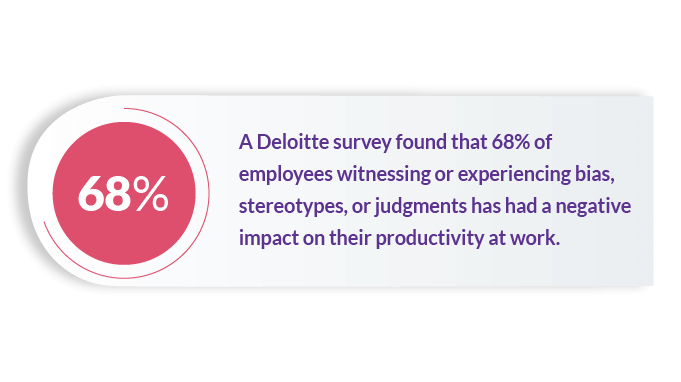
Therefore, you must recognize and tackle these biases to promote inclusivity and equality within the work environment. It requires strategies like education, training, and policies reinforcing an organization to remove such biases.
Why is Unconscious Bias a Problem in the workplace?
The existence of unconscious bias in the workplace can create problems that hinder the work culture. For example, unfair treatment towards certain individuals can hamper their mental health. Or making fun of a person due to their appearance can negatively impact productivity. And regardless of its form, the issue of unconscious bias is extremely damaging in the long run.
According to a perception survey of 400 managers, men listed unconscious bias as the top barrier they witnessed to women’s career progression. And that certainly creates a significant gap in the work culture if you want to progress in the long run.
But in what other ways does it become a problem in the workplace? Let’s glimpse a few of them to understand better. -
A. Discrimination: Unconscious biases are formed by societal norms and personal experiences, which can lead to discrimination. These preferences for specific individuals or groups may unknowingly occur based on gender, race, age, or appearance. Therefore, it results in discrimination against others due to unequal opportunities.
Read more: Confronting Discrimination In The Workplace (For Leaders)
B. Hiring and Promotions: The impact of unconscious bias on recruitment and promotion cannot be ignored. Hiring managers may subconsciously favor candidates that match specific molds or share their attributes, resulting in a lack of diversity within the organization. In addition, the same situation may affect promotion decisions that can hamper career advancements.
C. Team Dynamics: Unconscious bias can create an unhealthy environment that negatively impacts team dynamics. This is especially true for those who feel undervalued or marginalized by their colleagues due to unconscious biases. The result is less collaboration and decreased creativity within the team - leading to reduced productivity. Building a high-performing team becomes more challenging in this situation.
D. Employee Well-being: In organizations where unconscious bias is prevalent, negative consequences will inevitably occur. For instance, individuals who experience prejudices may find it difficult to fulfill their responsibilities. In return, this can hinder their job satisfaction levels. Furthermore, ongoing exposure to unconscious bias often creates an unhealthy work environment, declining morale, and plummeting productivity. In the long run, this hurts employee well-being and increases stress and disengagement.
Read more: Confronting Discrimination In The Workplace (For Leaders)
Types of Unconscious Bias and How to tackle them?
To tackle the issue of unconscious bias in the workplace, you should have a fair idea about the biases that make up the list. And to help you with that, here are some of the most dominant biases you will find in the workplace-
1. Gender Bias

When a person favors a particular gender over another, gender bias comes into play. In other words, it is also known as sexism. It can happen unintentionally when someone identifies stereotypes about different genders in the workplace. Unfortunately, this bias is prevalent in most industries and is still one of the biggest head-butting factors regarding unconscious bias.
One of the most common occurrences of gender bias comes into play during recruitment. For example, a male candidate is favored over a female one despite having the same level of skillset. Moreover, the gender pay gap is another perfect example of gender bias.
In addition, men feel emasculated by their female counterparts in managerial roles. This disrupts the team dynamics and creates an imbalance in the workplace.
According to Forbes, in 2022, women earned 17% less than men on average. And numbers do not lie. This can put a bad name on the organization's overall branding while leaving the employees with a poor experience in the workplace.

How to tackle it:
-
Education and Awareness: One of the best ways to combat gender bias is to educate the workforce. This can be done through training programs and workshops especially focusing on the issue. It will help the employees understand the factors and different forms of gender bias.
-
Diversity and inclusion initiatives: To tackle the issue of gender bias, you need to focus on creating a diverse and inclusive workplace. This entails employing and promoting people from diverse backgrounds and cultivating a culture where everyone feels accepted and appreciated.
-
Empower employees to speak up: Employees should have the power and opportunity to voice their concerns if they face gender bias. You need to create a workplace where they feel comfortable speaking up while taking prompt and serious action about the issue.
You can also have an internal committee focused solely on tackling gender bias as it is a sensitive topic.
2. Age Bias!

Age bias occurs when an employee is treated unfairly due to being too young or old. According to an AARP survey, 78% of older workers have experienced or seen age-based discrimination in the workplace. An unfair perception of their skill set, experience level, or desired career alignment may be involved in such distorted treatment. This makes developing a work culture that functions together towards a common goal more challenging.
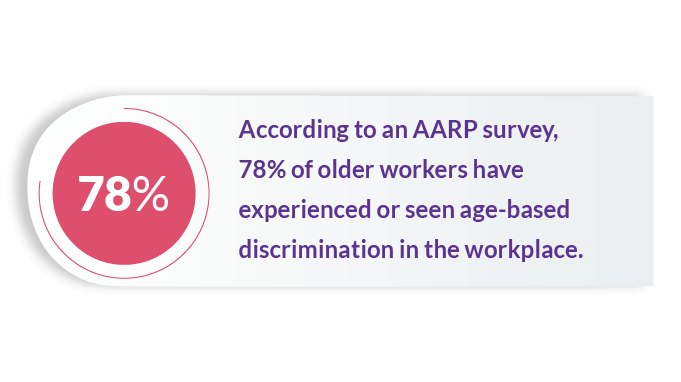
Some instances where age-based bias occurs include the following-
-
Termination or layoff despite having experience and competence.
-
Having a prejudice that employees above 40 are technologically not proficient.
-
Facing rejection due to lacking working experience if the candidate is young or facing rejection because of the assumption that older employees are not open to adapting to newer developments.
How to tackle it:
-
Create Awareness: Even if there is a shift in the working professionals from baby boomers to Gen-Z, everyone plays a crucial role. You need to raise awareness that every employee has their part to play in laying the foundation for the organization. Moreover, educate the workforce about the value of intergenerational diversity and the negative impact of age stereotypes.
-
Foster Cross-Generational Collaboration: Employees from different generations must understand each other to reduce age bias. And to do that, you can promote cross-generational collaboration where ideas can be shared with each other. This will give them a clear picture of the different thought processes that change with age, thus removing misconceptions.
3. Name Bias
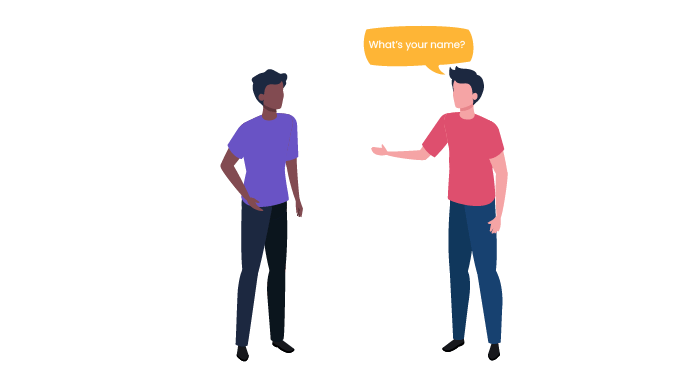
According to research, applicants with white-sounding names were 50 percent more likely to be contacted for job interviews than those with typical black names. Name bias is a form of unconscious bias that occurs when someone is treated differently because of their name. In workplaces, this occurs in multiple scenarios where people with particular names enjoy favoritism, attention, and opportunities from others.

Several factors might spark this kind of bias. For example, some cultures or socioeconomic backgrounds are perceived negatively by the sound of a unique name. This could lead to assumptions about an individual’s capabilities and talents in the workplace. In the long run, this can lead to heightened anxiety, frustration, and feelings of isolation for the employees facing name bias.
How to tackle it:
-
Focus on Blind Hiring: Blind hiring is a recruitment strategy used to eliminate prejudices throughout the hiring process. The candidate's name, gender, cultural background, age, height, and ethnicity are all blacked out. They are chosen based on their knowledge, abilities, and experiences.
-
Train Managers and HR Professionals: Provide training modules to managers and HRs to recognize and address name bias. Moreover, guide them in fair evaluation and decision-making practices that will not involve bias based on names.
4. Halo Effect

The Halo effect occurs when a person has a positive impression of someone because of their previous positive interpretations. Edward Thorndike coined this term in the 1920s. The Halo effect constructs an image of a person based on limited information.
When an HR professional, for example, reads an application from a candidate from a prominent university, their impression alters. There is a belief that candidates will excel in everything they do if they join the organization.
Take the instance of LinkedIn recommendations. It can sometimes mislead hiring managers into believing a candidate has good potential. But in reality, the scenario might be different. Hence, it is essential to assess things before jumping to conclusions.
How to tackle it:
-
Use a structured decision-making process: Relying exclusively on intuition or initial judgments while making meaningful choices can be risky. However, introducing a structured decision-making process facilitates an impartial evaluation of all pertinent data resulting in optimal resolutions.
-
Collect Data: Achieving clarity about an individual involves obtaining information from multiple routes. Through this deliberate process, one can develop a nuanced perspective on the person in question and confidently make thoughtful choices.
5. Beauty Bias
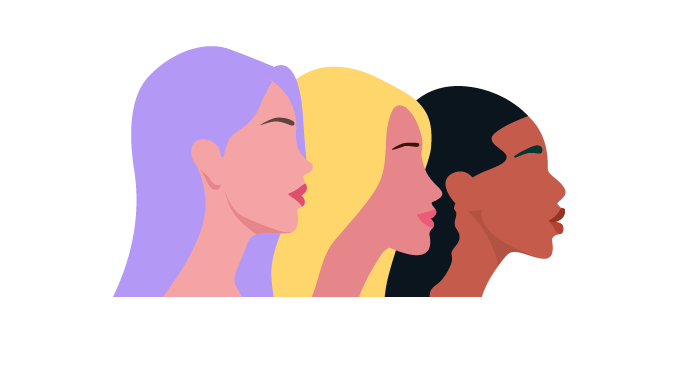
The favorable treatment of individuals based on their physical appearance and attractiveness is called beauty bias in the workplace. It is a type of discrimination that people often indulge in without even knowing it. This can have a daunting impact on others who do not fall under the “attractive” category.
According to a study, men regarded as less attractive earn 9% less per hour than the male average, while their attractive counterparts make 5% more.
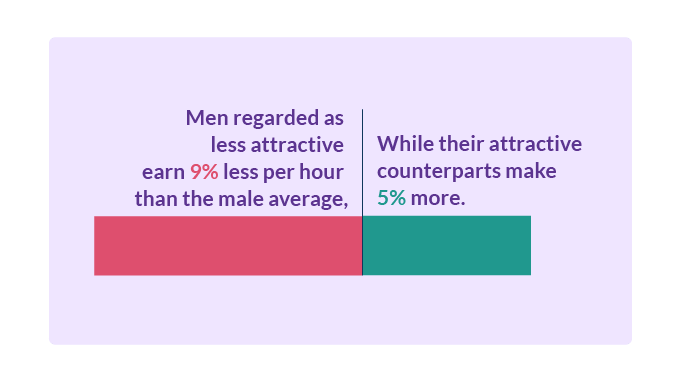
For example, take the instance of promotion. Despite having better skills, the attractive individual is favored for promotion over the unattractive individual. This can lead to frustration for the skilled employee, and they might leave the organization for better opportunities. In the long run, such instances can increase turnover and decrease employer branding.
How to tackle it:
-
Create a Skill-based workplace: Regardless of how employees look or appear, ensure that the leaders focus on individual skills and performance metrics. You can develop policies or set parameters for what an employee needs to achieve for promotion. Define clear and concise KPIs to create a base to assess employees and diminish beauty bias.
-
Have a no-picture policy: Shortlist candidates based on their competencies and skills while screening resumes. Make it clear on the website that the organization has a no-picture policy in the resumes while applying for a job. This can reduce any sort of bias existing during the hiring process.
-
Good DE&I Policies: Ensure to develop good DE&I policies that focus on hiring candidates from different backgrounds with varied skills and thought processes.
Your higher might still be practicing beauty bias, however, it is your duty to keep a regular check on it and take the necessary action.
6. Horns Effect

The Horn effect is a cognitive bias that occurs when you form an opinion about someone based solely on one bad attribute. This form of bias is an inaccurate and unfair way of judging an individual.
For example, if a manager gives a new joiner a constructive criticism, then they might assume that their manager is a harsh person. In the long run, the Horn effect can and will harm team cohesiveness and the dynamics of team members.
How to tackle it:
-
Take time: Let the team members get to know each other well before making assumptions. You can conduct interactive team discussions or take them for team-lunch outings. This will develop a good understanding between the team members, and individuals will not resort to judgment.
-
Use multiple sources of information: Before anyone makes any assumptions, get reliable information from various sources. It can include good background checks from previous organizations, etc., This will assist you in gaining a concrete image of the employee and avoiding decisions based on a single bad attribute.
7. Confirmation Bias!
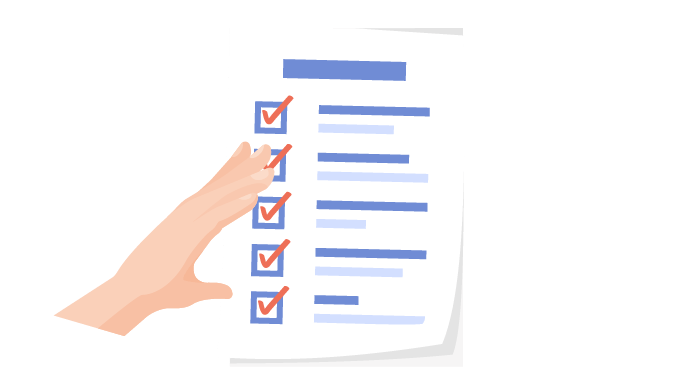
Confirmation bias is an underlying human tendency in which people seek, favor, and interpret information in ways that confirm their current views or notions. It occurs when one picks data supporting ideas while overlooking contradictory components or interprets uncertain evidence as supporting an already-held perspective.
This cognitive phenomenon has the greatest impact on decision-making, problem-solving, and perception in the workplace.
Inclusive, well-informed decision-making must occur within teams, but leaders can inadvertently influence outcomes through confirmation bias.
For instance, take the scenario of a team discussion. If there is confirmation bias, the manager can sway the conversation towards supporting what they believe while dissenting voices within the group. They do not evaluate all viable options and halt a team's progress with their bias.
How to tackle it:
-
Be open to new information: As a leader or a manager, be open to accepting any new information that comes your way. Encourage the same for the team members as well. That way, you will not only open ways to improve the team but enhance the team members' critical thinking.
-
Challenge your beliefs: You can challenge any pre-existing views about how things work in the workplace. Concentrate on shifting your beliefs and become more receptive to new developments and ideas. This will provide a new perspective on how things will develop within the team and the organization.
-
Recognize your own biases: Understand what your biases are and acknowledge them. Once you know your biases, it becomes easier to tackle them and work on improving the thought process around them.
-
Active listening: Ensure you actively listen to what others say. When you become attentive, it becomes a daily practice. Doing so will make it a part of your work culture, and it will be easier for you to make it an integral part of the organization. Moreover, it will give you a different perspective of what others think within the workplace.
-
Encourage Dissenting opinions: During group discussions, ask for alternative opinions and encourage them to table their thoughts. Create a safe work environment where the employees feel comfortable coming up with ideas. They should not feel that they will be judged or get the stick from the leaders. A culture like that will create a psychologically safe environment where everyone thrives.
8. Authority Bias!

Authority bias refers to the tendency of individuals to give more weight to the opinions of people in positions of authority. Following the instructions of individuals with relevant expertise is generally a good idea. However, blindly following what they say and asking to do without any proof can have repercussions like-
-
Poor decision-making
-
Lack of innovation, and
-
Low employee empowerment
Moreover, people with authority tend to misuse their power and take advantage of such situations without accountability.
How to tackle it:
-
Ask Relevant Questions: Do not be afraid to question their decision and ask for pieces of evidence or proof that will justify their claims.
-
Conduct your research: As a manager, if an authoritative figure asks you to do something, do your research. Come up with your reasoning based on the research and support them or reject their idea. Try to put it more constructively so that no team conflicts might hamper the organization.
-
Encourage evidence-based decision-making: Do not make hasty decisions just because you or your manager feel like it. Ask on what basis the decision was made. A full-proof decision should be made if there is positive evidence. Also, think about the result of the decision. It will help you evaluate your options and develop the right judgment.
9. Affinity Bias!

Affinity bias refers to the situation in which people tend to favor others with similar backgrounds, experiences, and interests. This can increase unconscious discrimination of people with different interests and backgrounds.
As far as professional settings go, workplaces are not exempt from such biases. And it is present in various forms. Some include-
-
Hiring managers might recruit people who share the same background or attend the same school.
-
Employees that are like-minded with their managers might get frequent promotions, even if they do not deserve it. For example, for every 100 men promoted and hired to manager, only 72 women are promoted and hired. This is primarily because men outnumber women in hierarchical positions.
-
Managers tend to assign desirable work assignments to employees with the same interests.
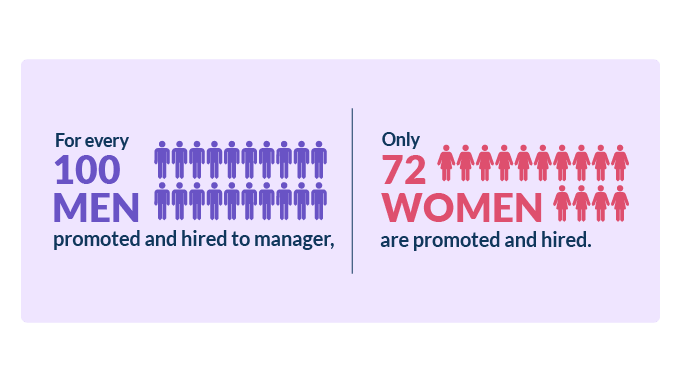
This can harm the workplace setting in the form of low morale, unfair treatment of employees, and lack of diversity. In the long run, it will damage the work culture and create a toxic environment that is not preferred by the masses.
How to tackle it:
-
Have a diverse hiring panel: A diverse hiring panel will help you assess the candidates based on different criteria. This will improve the process and assist you in selecting the right candidates based on talent and skill while removing any bias.
-
Focus on Cultural Exchange Program: Starting cultural exchange programs could be highly beneficial for businesses keen on reducing affinity bias. Such programs allow staff members to work temporarily in alternate departments or locations, facilitating exposure to unique environments. This experience could challenge assumptions while promoting diversity and refreshing perspectives, benefiting all teams.
10. Overconfidence Bias!

Overconfidence bias is a tendency of an individual in the workplace to think that they are better at certain skills than others. But in reality, they fall short of their expectations and tend to harm the team in unwanted ways.
For example, if a team leader thinks he alone can handle a project based on one certain skill, they might be wrong. The project might require varied skill sets of different individuals, but the team lead might think otherwise. This can hamper the effectiveness of a team and garner undesirable results hampering the organization’s bottom line.
How to tackle it:
-
Consider the consequences: Before making rash decisions, consider the result it will have on the team and the organization. Evaluate every possible outcome to make an informed decision and avoid catastrophe.
-
Heed to Feedback: Listen to what others say about your decision-making. A team will have their say with different perspectives. Take the necessary feedback and work accordingly. This will also help you evaluate your decision-making process and make you a better leader.
Conclusion!
Understanding each bias that is prevalent in the workplace is critical to overcome the work culture barriers. Not knowing the issue will make it difficult for you to solve the problem. As a leader, you have to address these with a strategic approach so that you do not disrupt the workplace setting. Start with little progress but be patient with the results. This will require your perseverance and capability of a swift thinker. In the long run, it will help you create a more inclusive and people-friendly workplace that employees love.
FAQ:
Q. What are some common examples of unconscious bias in the workplace?
A. Affinity bias, confirmation bias, beauty bias, and gender bias are all examples of workplace unconscious bias.
Q. Can you provide real-life scenarios illustrating unconscious bias in the workplace?
A. Real-life scenarios of unconscious bias may include dismissing ideas from certain team members or favoring candidates based on personal connections.
Q. What steps can organizations take to mitigate unconscious bias in the workplace?
A. Unconscious bias can be addressed by implementing bias awareness training and adopting inclusive hiring and promotion practises.
Q. Are there any tools or training programs available to address unconscious bias?
A. Unconscious bias workshops and online modules, for example, can assist individuals in recognizing and mitigating unconscious bias.
Q. What role does leadership play in addressing unconscious bias in the workplace?
A. By embracing diversity, fostering an inclusive tone, and holding others accountable for bias-free practises, leaders play a critical role in reducing unconscious bias.


















